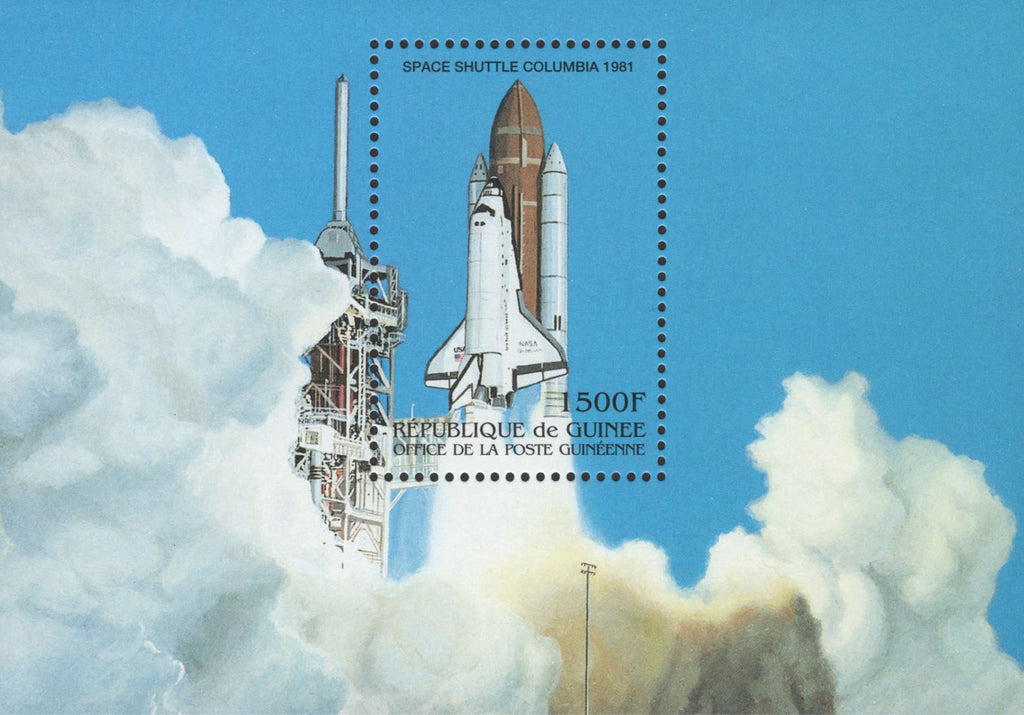Space Shuttle Columbia Rocket Souvenir Sheet MNH
- Categories Republic of Guinea, Space & Astronautics
Guinea Space Shuttle Columbia Rocket Souvenir Sheet MNH
A planet is an astronomical body orbiting a star or stellar remnant that is massive enough to be rounded by its own gravity, is not massive enough to cause thermonuclear fusion, and has cleared its neighbouring region of planetesimals.
The term planet is ancient, with ties to history, astrology, science, mythology, and religion. Five planets in the Solar System are visible to the naked eye. These were regarded by many early cultures as divine, or as emissaries of deities. As scientific knowledge advanced, human perception of the planets changed, incorporating a number of disparate objects. In 2006, the International Astronomical Union (IAU) officially adopted a resolution defining planets within the Solar System. This definition is controversial because it excludes many objects of planetary mass based on where or what they orbit. Although eight of the planetary bodies discovered before 1950 remain "planets" under the modern definition, some celestial bodies, such as Ceres, Pallas, Juno and Vesta (each an object in the solar asteroid belt), and Pluto (the first trans-Neptunian object discovered), that were once considered planets by the scientific community, are no longer viewed as such.
The planets were thought by Ptolemy to orbit Earth in deferent and epicycle motions. Although the idea that the planets orbited the Sun had been suggested many times, it was not until the 17th century that this view was supported by evidence from the first telescopic astronomical observations, performed by Galileo Galilei. About the same time, by careful analysis of pre-telescopic observational data collected by Tycho Brahe, Johannes Kepler found the planets' orbits were elliptical rather than circular. As observational tools improved, astronomers saw that, like Earth, each of the planets rotated around an axis tilted with respect to its orbital pole, and some shared such features as ice caps and seasons. Since the dawn of the Space Age, close observation by space probes has found that Earth and the other planets share characteristics such as volcanism, hurricanes, tectonics, and even hydrology.
Fast & Free Shipping within U.S.A.
We Care for your order, Pack it carefully and ship it within 24 hours.
Satisfaction Guaranteed!
Please explore our store for more stamps, souvenir sheets, post-office collectibles and philately books and pre-philatelic items:
montecinos.philately



















